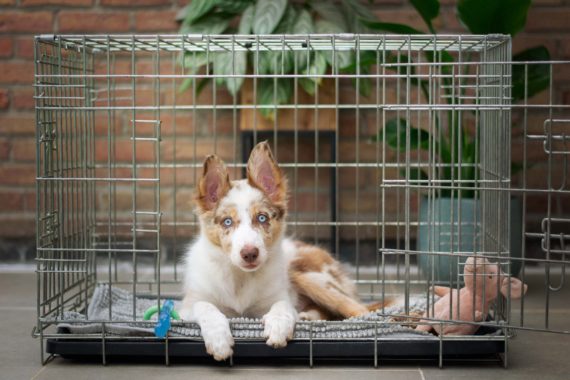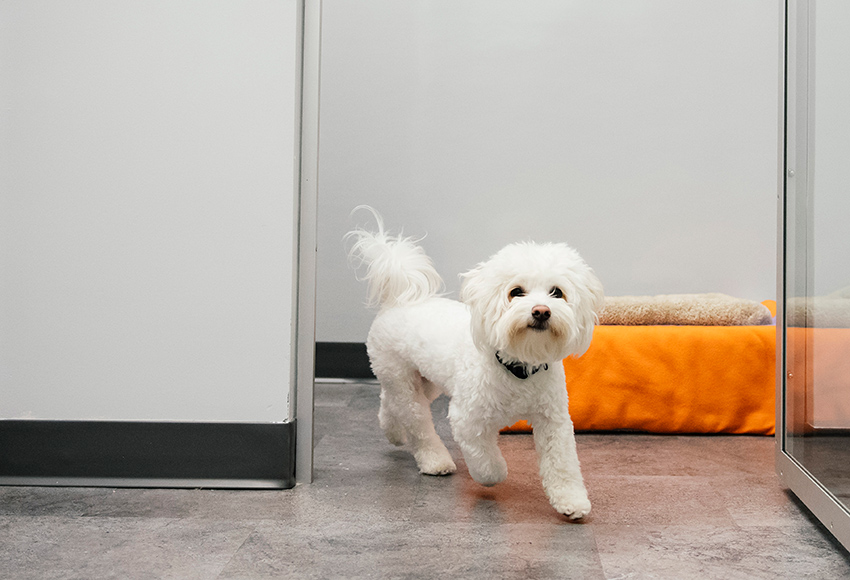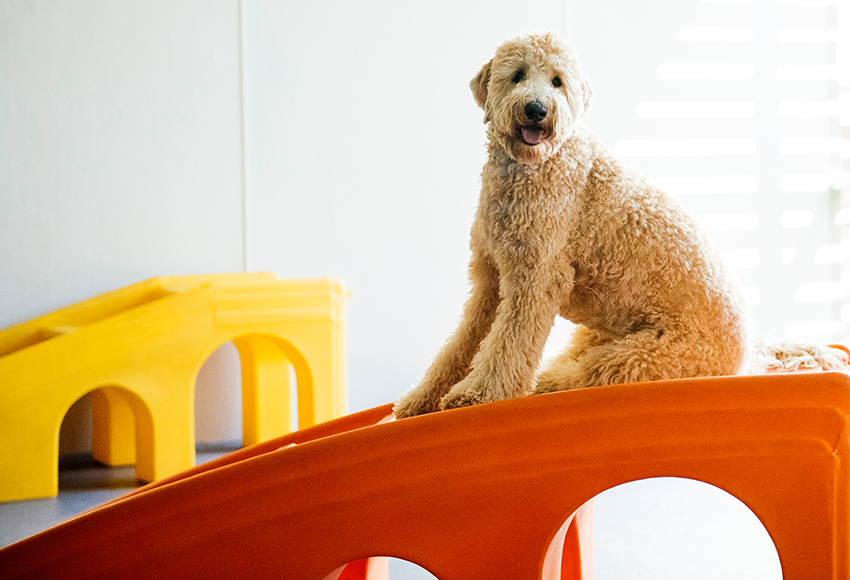Crate Training 101
July 18, 2023

Crate training is a valuable tool for dog owners. It is often misinterpreted that locking your pup up in a crate is a bad thing. This couldn’t be further from the truth. With proper training, you can provide your furry friends with a safe spot that they enjoy. Read more about our Crate Training 101 below.
Naturally, dogs are den-like creatures and can use their crates like a retreat. Crate training can also aid in housebreaking, preventing destructive behaviors, and promote overall well-being. If possible, starting crate training at 8-weeks-old is best for puppies. Though crate training can still be completed at any age.
Choosing the Right Crate
Selecting the appropriate crate is the first step towards successful crate training. Choose a crate that is spacious enough for your dog to stand up, turn around, and lie down comfortably, and a lot of people result in getting a crate that is too big for their dog. It may seem at first that giving your dog more room is better but that isn’t always the case, especially with puppies. If you give your pup too much room, they may result in using the extra space they have to go to the bathroom in. Which is not what we want at all. If you end up getting a crate for your puppy to grow into, use the divider to limit the space.
Introducing the Crate Training
This is probably the hardest part of crate training. The way you introduce the crate to your companion, the more success you’ll find. The goal is to associate the kennel as a positive space and not negative. Start by placing the crate in a common area of the house and keep the door open. Encourage your dog to explore the crate by placing treats, toys, or familiar bedding inside. Allow your pup to enter and exit the crate freely, promoting a sense of security and familiarity.
Positive Reinforcement and Rewards
To encourage your dog’s acceptance of the crate, use positive reinforcement. A good place to start is feeding your pup in their crate. It helps your pup recognize that the kennel is where good things happen. You can also try playing with your dog in their kennel just to add another reason why the kennel is a safe space for them.
If your dog voluntarily enters the crate or shows signs of comfort inside, praise and reward them with treats or verbal affirmation. This positive association will help your dog view the crate as a desirable and safe space.
Gradual CRATE Enclosure TRAINING
Once your dog is comfortable enough to enter the crate willingly, gradually closing the crate door for short durations. Stay with just a few seconds and gradually increase the time as your dog becomes more at ease. Rewarding your dog makes this process a lot easier. Once the pup is in the kennel, reward them with a delicious treat. Then each time they remain calm and relaxed inside the crate they should be rewarded again. It’s very hard to not rush this process. Rushing it could make it harder on your pup and could dissociate the positive experience you have been growing with them.
Establishing a CRATE TRAINING Routine
Consistency is key when crate training. We may not realize it, but dogs pick up on routines and do best in a routine. They thrive under structure and will adapt to crate training more effectively. As you continue to use the kennel, it is important to know they should be naked. Your pup shouldn’t be going into a kennel with even their collar. Their collars could get caught on the wiring and cause them to go into panic.
Gradual Alone Time IN THE CRATE
Gradually increase the duration of time your dog spends in the crate alone. This goes for sleeping in a kennel at night. Crate training can assist with separation anxiety and prevent destructive behaviors when you’re away from home. The kennel will give your pup somewhere to hang out in a comfortable manner while you’re gone. The kennel also ensures your furry friends’ safety. It is a whole lot safer leaving your dog in a kennel than leaving them in your living room and leaving them to possibly get ahold of something they shouldn’t have.
Conclusion
Crate training is a valuable tool for owners that provides numerous benefits for both the dog and the owner. By following these crate training essentials, you can establish a positive and successful crate training experience for your furry friend.Remember to be patient, consistent, and always use positive reinforcement to create a safe and comfortable space that your dog will willingly embrace as their own.
If you need help with crate training, Dogtopia Boise-Greenbelt has training programs designed to help your pup and does a 12pm-2pm nap time everyday to help get your dog in a routine. Give us a call to learn more or book a Meet & Greet for your dog today.






